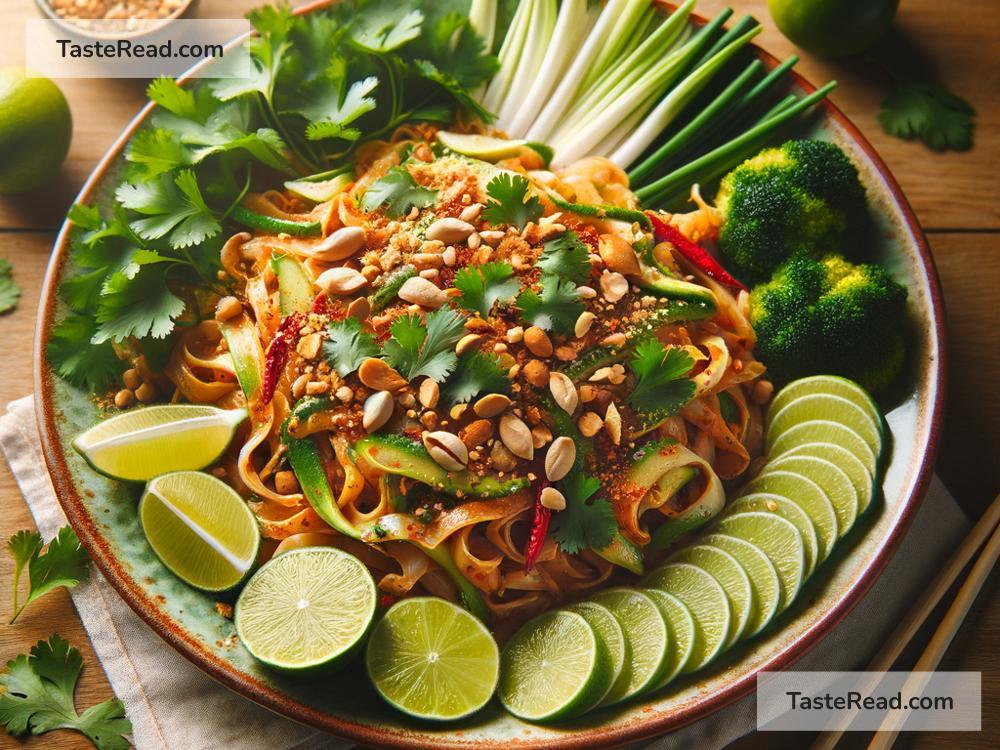The History Behind Pad Thai: Thailand’s National Dish
Picture yourself walking through the bustling streets of Thailand, inhaling the fragrant blend of lime, peanut, and chili. Amidst the array of street food, one dish stands out with its tantalizing colors and inviting aroma: Pad Thai. This simple yet delicious noodle dish has not only captured the hearts of Thais but also food lovers worldwide. But have you ever wondered about the long, winding road Pad Thai traveled to become Thailand’s national dish? Let’s take a flavorful journey through time to uncover the history behind Pad Thai.
From Humble Beginnings
To understand the origins of Pad Thai, we must first take a step back to see Thailand in a different era. Contrary to what many might think, Pad Thai isn’t a centuries-old traditional dish. In fact, it has its roots in a time of economic difficulty and political change during the late 1930s. Thailand (then known as Siam) was navigating through the rough waters of World War II, and rice—a staple in Thai cuisine—was in short supply. Rice noodles, however, were both economical and filling, which made them an excellent alternative.
The Creation of a National Icon
The story of Pad Thai begins with Plaek Phibunsongkhram (commonly known as Phibun), who served as Thailand’s Prime Minister during that era. Phibun was on a mission to modernize Thailand and cultivate a unified national identity. He believed that food could be an essential element in fostering national pride and unity.
In 1938, Phibun’s government initiated a campaign to promote a new dish: Pad Thai. The name itself was a work of genius, a melding of “Pad” meaning “fried” in Thai, and “Thai” emphasizing its nationalistic appeal—literally, Thai-style fried noodles. This dish wasn’t just about introducing a new food item; it was a carefully thought-out part of Phibun’s nation-building strategy. By incorporating Chinese noodles and a mix of flavors that appealed to the local palate, Pad Thai was a symbol of harmony and ingenuity.
The Recipe for Unity
What truly makes Pad Thai special is its incredible simplicity and versatility. The basic ingredients include stir-fried rice noodles, a combination of tofu, shrimp or chicken, bean sprouts, egg, and ground peanuts. It’s the subtle play of tamarind paste, fish sauce, dried shrimp, garlic, red chili pepper, palm sugar, and lime that brings this dish to life, offering a perfect balance of sweet, sour, salty, and spicy flavors.
Street vendors and restaurants across Thailand each have their own version of Pad Thai, allowing for variety but always maintaining the essence of the dish. This ability to adapt and embrace variation reflects the inclusive spirit Phibun intended to promote among the Thai people.
A Dish Beyond Borders
Over the years, Pad Thai has transcended its origins to become a global phenomenon. The dish’s international journey began with travelers who ventured to Thailand and fell in love with the complex, yet comforting flavors of Pad Thai. As Thai communities established themselves in different countries, they brought their culinary traditions with them, and Pad Thai became a popular menu item in Thai restaurants around the world.
Today, Pad Thai is more than just a noodle dish; it’s a symbol of Thailand’s rich cultural heritage and its ability to unite people across geographic and cultural boundaries. From its inception as a governmental campaign to its status as a beloved street food and restaurant favorite, Pad Thai represents the inventive and resilient spirit of the Thai people.
Savoring the Story
The history behind Pad Thai is a testament to how food can be a powerful tool for bringing people together and shaping a nation’s identity. It’s a story of innovation in the face of adversity, a recipe conceived not in ancient kitchens, but in the heart of a country’s desire for unity and progress.
So, the next time you savor the tangy, sweet, and savory flavors of Pad Thai, remember that you’re not just enjoying a delightful dish, but also partaking in a rich piece of Thailand’s history. Pad Thai is more than just noodles; it’s a narrative of national pride, resilience, and the unifying power of food.


